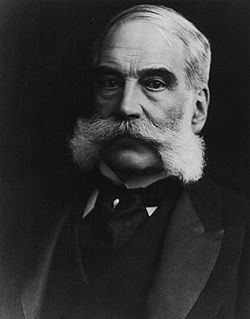Name Morris Jesup | Role Banker | |
 | ||
Died January 22, 1908, New York City, New York, United States | ||
Morris Ketchum Jesup (June 21, 1830 – January 22, 1908), was an American banker and philanthropist. He was the president of the American Museum of Natural History.
Contents
Personal
Morris Jesup was born at Westport, Connecticut in 1830, the son of Charles Jesup and Abigail Sherwood. He was descended from Edward Jessup of the Stamford, New Haven Colony, an early settler in Middleburg, Long Island, now Elmhurst, Queens. Edward later became owner of a large estate in what is now Hunts Point, Bronx. In 1854 Morris married Maria van Antwerp DeWitt (1834–1914). He died at home in New York City in 1908, and is buried in Green-Wood Cemetery in Brooklyn.
Business career
In 1842 he went to New York City, where after some experience in business, he established a banking house in 1852. In 1856 he organized the banking firm of MK Jesup & Company, which after two reorganizations became Cuyler, Morgan & Jesup. He became widely known as a financier, retiring from active business in 1884.
Philanthropy
Before his retirement, he was already active in a wide variety of philanthropic endeavors. Jesup was one of the organizers of the United States Christian Commission during the Civil War, which helped provide care for wounded soldiers. He was one of the founders of the Young Men's Christian Association, and served as its president in New York in 1872.
After 1860 he helped found and served as president of the Five Points House of Industry in New York, a type of settlement house in Lower Manhattan to teach new European immigrants the skills needed in the United States. In 1881, he became president of the New York City Mission and Tract Society. He donated the funds for construction of the Society's DeWitt (his father-in-law) Memorial Church in Rivington Street on the Lower East Side, a center of immigrant settlement. Jesup contributed funds and worked personally to better social conditions in New York, in a period when the city was struggling to aid many poor immigrants from rural areas of southern and eastern Europe, including the Russian Empire. The Woman's Hospital in New York City received $100,000.
He was best known as a patron of scientific research: Jesup was a major contributor to fund the Arctic expeditions of Robert Peary. He was elected president of the Peary Arctic Club in 1899. Jesup also funded the Jesup North Pacific Expedition (1897-1902), a major ethnographic project led by the anthropologist Franz Boas.
Jesup contributed to educational institutions. His contributions to Tuskegee Institute enabled George Washington Carver to develop a mobile educational station that he took to farmers. Jesup was treasurer of the John F. Slater Fund for the Education of Freedmen at its beginning. He served as a member of the Peabody Educational Board and of the General Education Board. He gave $51,000 to the Yale Divinity School; to Yale University, he gave the Landbery Arabic manuscripts, for which he had paid $20,000. Williams College received $35,000. He presented Jesup Hall to the Union Theological Seminary.
In 1881, he was appointed president of the American Museum of Natural History, in New York City, to which he gave large sums in his lifetime and bequeathed $1,000,000. In 1915 the Metropolitan Museum, New York, received by bequest of Mrs. Jesup, a large and valuable collection of paintings.
In 1883 he became chairman of the newly formed Forestry Committee of the New York Chamber of Commerce, tasked with "saving the woods and waters of the State [i.e.New York]," an early step in a process that eventually led to the creation of New York State's Adirondack Park in 1894.
Jesup was president of the New York Chamber of Commerce from 1899 until 1907, and was the largest subscriber to its new building. Jesup was a member of the Jekyll Island Club (aka The millionaires Club) on Jekyll Island, Georgia along with J.P. Morgan and William Rockefeller among others.
To his native town he donated funds to construct the Westport Public Library. He died in New York City on 22 January 1908, aged 77.
